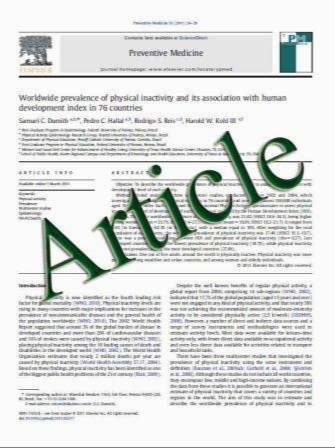Glomerulonephritis with crescents among adult Saudi patients outcome and its predictors
- نوع فایل : کتاب
- زبان : انگلیسی
- مؤلف : N. Oudah Z. Al Duhailib K. Alsaad S. Qurashi G. Ghamdi A. Flaiw F. Hejaili M. Farooqui A. Al Sayyari
- چاپ و سال / کشور: 2011
Description
The aim of this study is to investigate the clinical and pathological features and outcome of glomerulonephritis with crescents among adult patients. This is a retrospective study of all cases of crescentic GN seen over a 9-year period (2001–2010). Histological features were assessed, and renal function at baseline and end of followup period was recorded. Results among different etiological groups at baseline and end of follow-up period were compared. The mean age in the whole group was 35.6 years (16.2), with the lowest mean in the lupus nephritis (LN) group [27.7 years (9.9)] and the highest in the pauciimmune glomerulonephritis (PIGN) group (P = 0.001). There were 72 cases enrolled in the study. LN accounted for 49.3% of the cases, PIGN for 26.5%, other immune complex glomerulonephritis (ICGN) for 19% and post-infectious GN accounted for 6.3% The majority (85.7%) of the patients had renal impairment at presentation (mean serum creatinine levels were 247 (85) lmol/l, 412 (75) lmol/l and 230 (141) lmol/l in LN, PICN and ICGN, respectively (P = 0.05). Women accounted for 85.3, 76.5 and 36.2% of the patients in LN, PICN and ICGN, respectively (P = 0.025). By the end of the followup period of 26 (22.9) months, 25.8% of the patients were requiring dialysis (16.70% in the LN group, 50% in PIGN and 25% in ICGN (P = 0.05) and 21.7% had nephrotic range proteinuria (16.7, 1 and 33.3%, respectively (P = 0.4). Using logistic multivariate analysis, the only independent factors found to predict need for dialysis of prognosis were percent of sclerosed glomeruli (P = 0.05) and presence of ATN (P = 0.028). Baseline proteinuria or SCr, gender and number of glomeruli with crescents, on the other hand, did not impact prognosis. Using linear regression multivariate analysis, SCr, protein excretion and activity score at biopsy did not influence change in SCr or final SCr during the follow-up period. Using ANOVA to compare the groups of LN, PIGN and ICGN), we found significant differences only in gender between LN and ICGN (P = 0.035), in percent glomerular global sclerosis (between LN and PIGN (P = 0.007) and between LN and ICGN (P = 0.012) and in age (between LN and PIGN (P = 0.006). Almost half of our patients with CrGN were due to LN which is higher than that reported by others where PIGN was the more prevalent etiology. Patients with PICN were older and had worse prognosis. This could be explained by the higher number of globally sclerosed glomeruli in the PIGN group.
Clin Exp Med DOI 10.1007/s10238-011-0147-4 Received: 18 March 2011 / Accepted: 10 June 2011


